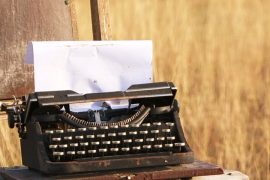If you consider yourself a reader, especially a reader of poetry, it is likely that you’ve read John Keats’s “Ode on a Grecian Urn.” Even if you consider yourself neither one of these, there’s still a good chance you’ve come across a phrase or two of this beloved poem.
I remember reading “Ode on a Grecian Urn” during my undergraduate. I was nineteen, far too young to actually comprehend it. Still, I was enthralled, partly because I didn’t fully understand it. At the time, I read it as a lament-laden contemplation of the inevitability of death, decay, and their merciless stranglehold over every living thing. Worse than the inevitability of death and decay is their collusion with time: if death does not arrive abruptly like a thief in the night, it claims us incrementally, exerting its influence minute by minute. But that’s not true for art; ars longa, vita
This cryptic advice comes at the end of a poem that is composed almost entirely of questions that appear rhetorical but are covertly earnest. Keats’s interrogation methods remind me of God in Job 38, who bombards Job with a relentless series of weighty cosmological questions he could never hope to answer. But the point of questioning in both “Grecian Urn” and Job 38 is that the answers we’re looking for are beyond our mortal comprehension. Job is finally silenced, after pages and pages decrying God’s injustice. In Keats’s poem, however, it is the urn that gets the last word, and while it offers us something of a response, its meaning is as impenetrable as God’s
In claiming that I write ekphrastic poetry, I find myself wanting to explore a process that draws on a manifold range of subjective positions and actions of mind… ekphrasis facilitates the process of creating the verbal text or poem to incorporate a dynamizing of the object.
— Marcelle Freiman
The Grecian urn’s indifference—I speak here of the actual, physical urn that prompted Keats to write his ode—is a function of its inanimate essence, its silent and still nature. Keats’ speaker wants the art object to do what only language can do: fashion experience into something called history; furnish passion and lust, time and desire, with consequence and rationale. But the visual image—the decorated vase, the painting, the photograph—can’t gift us with these luxuries.
It’s no wonder scholars have theorized ekphrastic production as a competitive practice riddled with anxieties and territorial struggle about which artistic medium can best do what. But this strikes me as a particularly masculine notion, and while it might apply to Keats, it’s certainly not true of all ekphrastic engagement. As Laura M. Sager Eidt notes in Writing and Filming the Painting, ekphrasis can function as “a useful tool to explore many of the issues at heart in the relationship between words and images.” Likewise, Marcelle Freiman understands ekphrastic poetry as a way to “dynamize” the visual object. In that same spirit of mutual vitalization, we invite you to experience Frank Relle’s photograph “Amano” alongside Jack Bedell’s ekphrastic poem of the same name, as well as Adam J. Gelling’s “Claude Monet, Argenteuil, 1875” from our recent spring issue.




